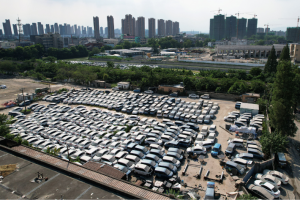The global trade finance system is not fit for purpose, a new report argues, mainly due to lack of modernisation that has left buyers and sellers floundering in an increasingly digitised world.
Trade finance fuels $5.2 trillion in global transactions this year, but the system has many shortcomings, especially for the millions of smaller businesses.
The need to improve the system—which facilitates the movement of goods and services around the world—has been evident for some time. A recent Asian Development Bank study estimated that the gap in trade finance availability reached $1.7 trillion in 2020, representing 10% of global trade.
Financial institutions are a critical facilitator of global trade, with about 40% of total goods being supported by bank-intermediated trade finance.
“However, the system just doesn’t work as it should for micro, small, and medium enterprises (MSMEs) which is the focus of the report,” the authors write.
Disruptions caused by the Covid-19 pandemic have exacerbated this shortfall. In response, the International Chamber of Commerce, Fung Business Intelligence and McKinsey & Company, have outlined a roadmap for reform.
Financing rejection rates for such businesses run at 40%, while a 2017 World Bank study indicated that 65 million MSMEs were credit constrained.
An improved global trade finance ecosystem could add many of the 600 million new jobs needed by 2030 to absorb the growing global workforce, as well as enable progress toward the goal of financial inclusion, which is particularly needed in developing economies.
The authors urge the implementation of standards enabling the digitisation of global trade beyond financing activities, standards enabling specific digitisation of the trade finance industry, and non-mandatory recommendations for market participants focused on improving service levels while reducing players’ cost to serve.
The report calls for an “interoperability layer” fostering access across networks and platforms.
“Such a model would significantly improve global efficiency, in part by sharply limiting redundancies while simultaneously enabling the adoption of a series of global shared utilities and standards,” they said.
“Importantly, such a model is compatible with the ongoing development of bespoke solutions addressing the current and prospective pain points affecting specific sectors, geographies, and other subgroups.”
• George Russell
READ MORE:
Trusting Tech to Make Checks: the Case for AI in Trade Finance
McKinsey Employees Demand Carbon Tally: NYT
ADB panda bond sale boosts SOE debt
WATCH MORE:
























